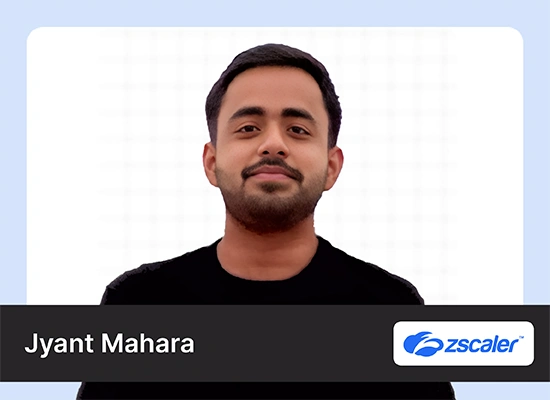Introduction
In the evolving field of machine learning, generating accurate responses with minimal data is crucial. One-shot prompting is a powerful strategy that enables AI models to perform specific tasks by providing just a single example or template. This approach is especially beneficial when the undertaking calls for a few degrees of guidance or a selected format without overwhelming the version with multiple examples. This article explains the concept of One-shot prompting and its applications, advantages, and challenges.

Overview
- One-shot prompting guides AI models with a single example for specific tasks.
- This approach uses minimal data, making it efficient and resource-saving.
- Examples include translation and sentiment analysis with just one input-output pair.
- Advantages include improved accuracy, real-time responses, versatility, and data efficiency.
- Limitations involve handling complex tasks, potential overfitting, and dependency on example quality.
- Compared to zero-shot prompting, one-shot provides clearer guidance and better accuracy but may struggle with unexpected tasks.
Table of contents
What is One-shot Prompting?
1-shot prompting involves instructing an AI model with a single example to perform a specific task. This method contrasts with zero-shot prompting, where the model receives no examples, and few-shot prompting, where the model receives a few examples. The essence of this approach is to guide the model’s response by providing minimal but essential information.

Explanation of One-Shot Prompting
This is a prompt engineering technique in which a single input-output pair trains an AI model to produce the desired results. For example, when you instruct the model to translate “hello” to French, and it accurately provides the translation “Bonjour,” the model learns from this one example and can effectively translate various words or phrases into French.
Example of One-Shot Prompting
Example 1:
User: Q: What is the capital of France?
A: The capital of France is Paris.
Now answer: "Q: What is the capital of Switzerland?"
Response: "The capital of Switzerland is Bern."
In this example, the single prompt guides the model in producing accurate answers by following the provided format.
Also read: Beginners Guide to Expert Prompt Engineering
Example of Sentiment Analysis Using One-Shot Prompting
One-Shot Prompt:
User: The service was terrible.
Sentiment: Negative
User: The staff was very friendly.
Sentiment:Response: Positive
Advantages of One-shot Prompting
Here are the advantages:
- Guidance: It provides clear guidance to the model, helping it understand the task more accurately.
- Improved Accuracy: The model can produce more accurate responses with a single example compared to zero-shot prompting, where no examples are provided.
- Resource Efficiency: It is resource-efficient and does not require extensive training data. This efficiency makes it particularly valuable in scenarios where data is limited.
- Real-Time Responses: It is suitable for quick-decision tasks, allowing the model to generate accurate responses in real time.
- Versatility: This method can be applied to various tasks, from translation to sentiment analysis, with minimal data input.
Also read: Prompt Engineering: Definition, Examples, Tips & More
Limitations of One-shot Prompting
Here are the limitations of One-shot prompting:
- Limited Complexity: While this approach is effective for simple tasks, it may struggle with complex tasks requiring extensive training data.
- Sensitivity to Examples: The model’s performance can vary significantly based on the quality of the provided example. A poorly chosen example may lead to inaccurate results.
- Overfitting: There is a risk of overfitting when the model relies too heavily on a single example, which may not accurately represent the task.
- Incapacity for Unexpected Assignments: It may have difficulty handling completely new or unknown tasks, as it relies on the provided example for guidance.
- Example Quality: The effectiveness of this approach depends on the quality and relevance of the provided example. A high-quality example can significantly enhance the model’s performance.
Also read: What is Zero Shot Prompting?
Comparison with Zero-Shot Prompting
Here is the comparison:
| One-Shot Prompting: | Zero-Shot Prompting: |
| Uses a single example to guide the model. | Does not require specific training examples. |
| Provides clear guidance, leading to more accurate responses. | Relies on the model’s pre-existing knowledge. |
| Suitable for tasks requiring minimal data input. | Suitable for tasks with a broad scope and open-ended inquiries. |
| Efficient and resource-saving. | May produce less accurate responses for specific tasks. |
Conclusion
This approach is a valuable technique in machine learning, offering stability among the performance of zero-shot prompting and the accuracy of few-shot prompting. Using a single example, one-shot prompting helps provide correct and relevant responses, making it a powerful tool for numerous applications.
Also read: The Art of Crafting Powerful Prompts: A Guide to Prompt Engineering
Master one-shot prompting and elevate your machine learning skills. Our course teaches you to leverage a single example for stable, accurate responses across applications. Join now and unlock the power of one-shot prompting!
Frequently Asked Questions
Ans. It provides the model with a single example to guide its response, helping it better understand the task.
Ans. It provides a single example of the model, whereas zero-shot prompting doesn’t provide any examples.
Ans. The main advantages include guidance, improved accuracy, resource efficiency, and versatility.
Ans. Challenges include potential inaccuracies in generated responses, sensitivity to the provided example, and difficulties with complex or completely new tasks.
Ans. While more accurate than zero-shot prompting, it may still struggle with highly specialized or complex tasks that demand extensive domain-specific knowledge or training.





